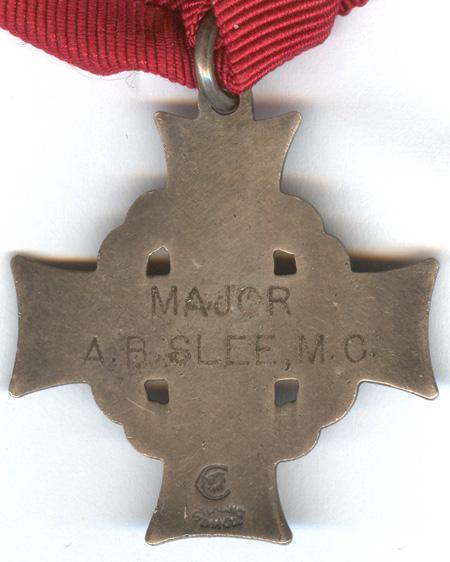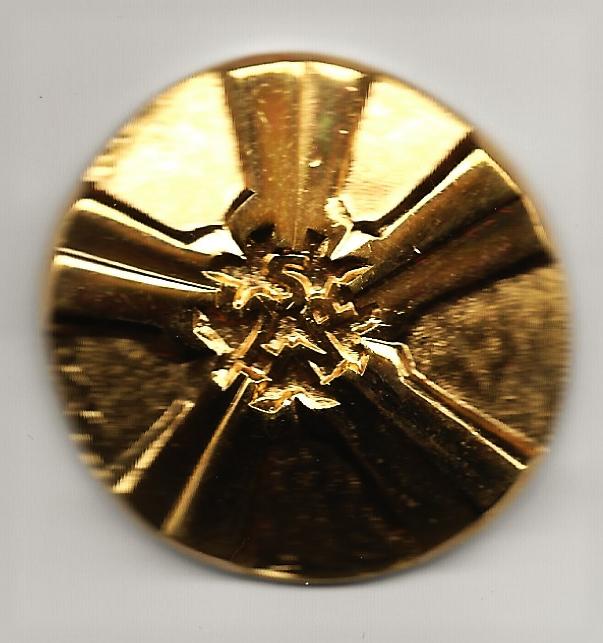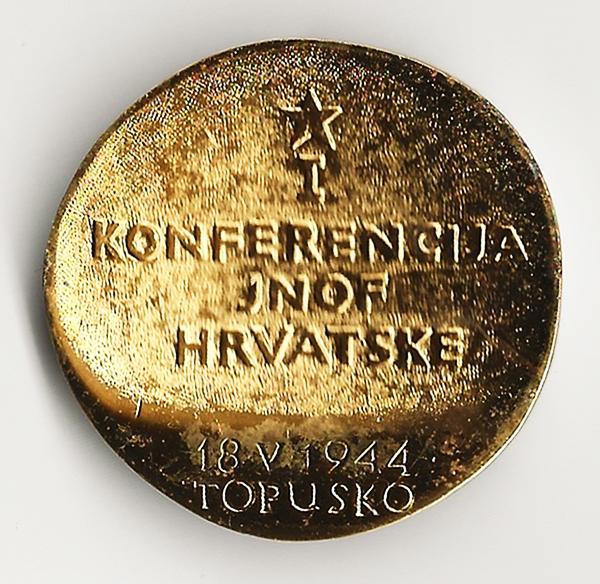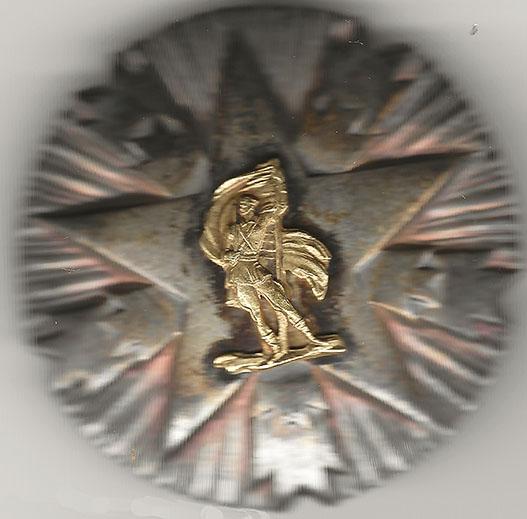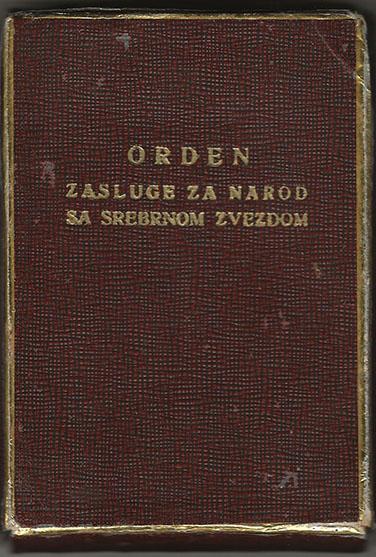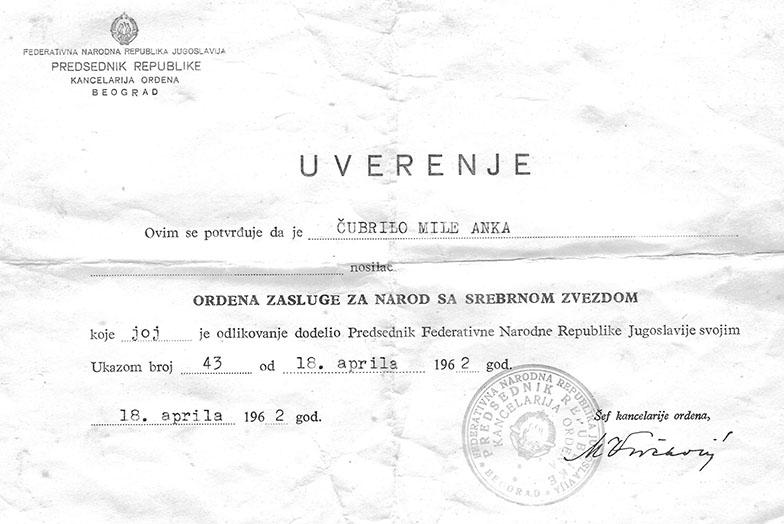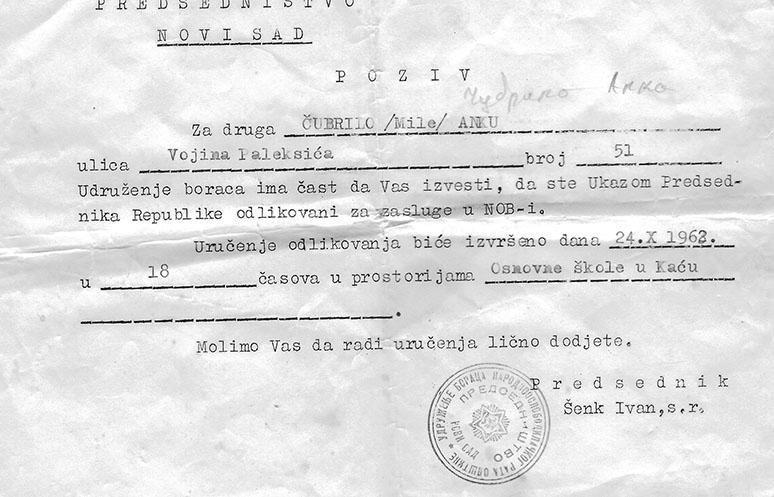-
Posts
552 -
Joined
-
Last visited
-
Days Won
2
Content Type
Profiles
Forums
Blogs
Gallery
Events
Store
Everything posted by Gunner 1
-

WW1 Canadian KIA.
Gunner 1 replied to Chris Boonzaier's topic in Great Britain: Orders, Gallantry, Campaign Medals
As Michael Johnson indicated in an earlier post, the remaining supplies of the George V Memorial Crosses were issued to men who died early in World War II. I have one such cross that was issued to an officer who died of a heart attack on 31 October 1940 while on active service with No. III N.P.A.M. Training Centre at Saanich. Interestingly the cross is named to MAJOR A. B. SLEE. M.C. who served in the Great War with the Royal Field Artillery. -
dpast32 wrote: "in addition to the above 'verification', included also are several articles documenting the IR A ambush: I don't like to make disparaging comments about other collectors groups but all the paperwork you mention in your earlier post appears to be photocopied research or research that describes an action, neither of which is generally considered "Verification" that the group is actually the one that the recipient received. Original documents related to the medal group may help with verifying a medal group but even with original documents there is no guarantee that the medals are actually those awarded to the recipient unless the group contains properly-named medals
-
MBE's like most officers' decorations were issued unnamed so any named example has been privately named. That being said, there is little chance that you will be able to conclusively determine whether it actually belonged to the man whose name is on the reverse. It is no difference than a Military Cross or DSO with engraved naming, which most collectors are hesitant to buy as there is no way to absolutely tell if the naming is contemporaneous. The price seems somewhat high as MBEs generally sell for around £130 which is currently about $170. I personally don't buy privately engraved decorations that are not accompanied by named medals and if I were to do so, I would expect to pay somewhat less than the value of the unnamed medal.
-

Cuba Orden Of Merito Vial
Gunner 1 replied to cuba1959's topic in Rest of the World: Militaria & History
We would be very happy to accept an article on the Cuban Order of Merit if you would be willing to write one. Send me a PM if your are interested. Regards, Dick Flory, JOMSA Editor -
All three bars appear to have US medals for the Korean War. In the photo the man presenting the award is President Singman Rhee of South Korea and the United States General to his left is General James Van Fleet, General Commanding, US Eighth Army in Korea.
-
Chris Boonzaier wrote: "The cross is always an individual award, not a unit award" According to my sources since 2011 the Cross for Military Valor may be awarded to French and foreign military units. Two awards with palm to the same unit allows members of the unit to wear a fourragére.
-

43rd Brigade RGA ~ 147th Siege Battery
Gunner 1 replied to Nutlet's topic in Great Britain: Research, Documentation & History
Siege Batteries kept war diaries for the early portion of the war but during the last one, or two, years of the war Siege Batteries war diaries ceased and the war diaries were kept by the Heavy Artillery Group (HAG) (later Brigade) that administered the battery. 147th Siege Battery served under the following Heavy Artillery Groups after 1 Jan 1917 (the file number for the war diary at The National Archives is listed for each HAG): Until 10 Feb 17: 77 HAG (WO 95/324) 10 Feb 17 to 22 Mar 17: 28 HAG (WO 95/541) 22 Mar 17 to 25 May 17: 18 HAG (WO 95/540) 25 May 17 to 16 Jun 17: 83 HAG (WO 95/478) 16 Jun 17 to 3 Sep 17: returned to 18 HAG (WO 95/540) 3 Sep 17 to 17 Dec 17: 78 HAG (WO 95/229) 17 Dec 17 to end of war: 43 Brigade RGA (WO 95/321) -
Ökenräven wrote: "one more question guys, do you know any website or literature that is a must to read before I really get in to this? So I can minimize the risks of obtaining fake items." I would make the following suggestions for any beginning collector of British campaign medals: 1. Join the Orders and Medals Research Society (www.omrs.org) and the Orders and Medals Society of America (www.omsa.org). They both publish first-class journals dealing with medals. 2. Purchase some books about the medals you are going to collect: British Battles and Medals is a must for anyone collecting British campaign medals. Rather expensive but gives lots of information concerning the history, operations covered, correct naming, regiments present, etc. Considered the Bible on British Campaign Medals. British Gallantry Medals does the same thing for decorations. 3. Join the British Medals Forum: extensive discussions, questions and answers and research assistance relative to British medals. Also extensive topics of fake medals and medal naming. 4. Purchase a copy of the most recent addition of Medal Yearbook published by Token Publishing. A price guide to British orders, decorations and medals. Also describes the naming, obverse, reverse and details of each medal with photos and any clasps awarded. Published each September. 5. Read about medals, examine medals and comments on dealers' websites and handle as many medals and possible. Good luck on your collection and ask as many questions as necessary on this forum and others. Regards, Gunner 1
-

My first Mons Star
Gunner 1 replied to cabbell2207's topic in Great Britain: Orders, Gallantry, Campaign Medals
His medal index card is under the name William Freeman Gnr 90583. Went to France and Flanders on 21 August 1914 and the medal roll shows him posted to "1st Reinforcements and Base Details Royal Field Artillery". He was discharged sick on 16 June 1916. His 1914 Star was awarded without the date clasp. His Silver War Badge #74426 was issued for sickness on 9 Dec 1916 and indicates that when he was discharge he was posted to 5C Reserve Brigade, RFA -

Single BWM to Royal Artillery
Gunner 1 replied to Noor's topic in Great Britain: Orders, Gallantry, Campaign Medals
You may already be aware of this, but Byrne received his DCM. for an action at Annequin on 9 April 1916 (the original citation indicated he was a Sergeant in C Battery, 174 Brigade but this was"corrected" to D/177 in the London Gazette of 17 September 1917). Actually this correction was a mistake as the war diary for 174th Brigade on 27 July 1916 indicates that Byrne received his DCM while serving with C/174. His Bar to the DCM was for an action with D/177 at Kytschaete Ridge on the night of 24/25 June 1917. If you do not have the citations let me know. -
paja: You are correct that the initials SSRNH are intertwined on the center front of the plaque. The plaque is 45mm in diameter. The top of the case is below. The case is 97mm wide and 108mm from top to bottom.
-
Paja: A plaque that came with a group of Yugoslav medals. My understanding is that the obverse is the symbol of the Socialist Alliance of Working People of Croatia and the reverse commemorates the First Conference of JNOF (National Liberation Front of Yugoslavia) at Topusko on 18 May 1944.
-

Yugoslavia - Order of Merits for the People III
Gunner 1 replied to paja's topic in Southern European & Balkan States
-

Yugoslavia - Order of Merits for the People III
Gunner 1 replied to paja's topic in Southern European & Balkan States
Eric: I forgot to mention that it has an IKOM hallmark and is numbered '154357.' -

Yugoslavia - Order of Merits for the People III
Gunner 1 replied to paja's topic in Southern European & Balkan States
A box for a 3rd Class that I have not seen before. The reverse of the third class order contained in the box has been converted from screw back to a vertical pin back with ZIN KOVINICA. Folded in the box was an award document and a second document that I have not yet identified. -

MIC Analysis - Lt Rumble RGA
Gunner 1 replied to SemperParatus's topic in Great Britain: Research, Documentation & History
The EF9 Form was sent to officers to fill out and return in order to be eligible for Great War medals. The date indicates the receipt of the completed form by the Army Medal Office. Canadians who left Canada and disembarked in the UK during the war were awarded the British War Medal. As Rumble lived in Canada and was a member of the Canadian Field Artillery he probably earned his BWM in this manner. Rumble was commissioned into the Royal Garrison Artillery Special Reserve on 24 June 1917, He was promoted Lieutenant, RGA SR on 24 December 1918. His service papers are available at The National Archives under WO 339/85182. Regards, Gunner 1 -

Online Research for Soviet Awards
Gunner 1 replied to GODISHIGH's topic in USSR: Soviet Orders, Medals & Decorations
Yes, there is the Liudi I Nagrazhdeniia section of Podvig Naroda (www.podvignaroda.ru) that gives the award sheets and orders for Soviet decorations during the Great Patriotic War but you have to know the soldier's full name and be able to read Russian. -

George Cross miniature
Gunner 1 replied to vbPasha's topic in Great Britain: Orders, Gallantry, Campaign Medals
The problem I see with miniature groups is that you may be able to show that the group is 'made-up' but it is almost impossible to 'prove' that the miniature group was ever worn by the recipient, even when the miniature group accompanies a full-sized group. I have seen a number of examples of full-sized groups sold without miniatures which later reappear with miniature groups, some even 'named.' Gunner 1 -
Many years ago my wife and daughter purchased a 6 foot high, 7 foot wide and 48 inch deep oak cabinet for me at auction , It has two rows of 17 drawers each with a drawer depth of a little over two inches. It is oak and was constructed in the late 1800s. I have been using it for over 20 years and have had no problem with silver items tarnishing over that time. The items are displayed on acid-free felt with an inch and half thick acid-free foam underneath. My guess is that any gases from the oak have long ago disappeared. The fact that the humidity is usually less than 15% probably also plays a role. I would mention that if you are storing medals, badges or other militaria in a safe that is closed for a long time you need to have a desicant in the safe to absorb any moisture. Make sure that the plastic medal envelopes that are used to store medals do not contain plastic softners in them as these will turn silver and bronze items a slimy green over a long period of time.
-

Yugoslavia Yugoslavian Partisan Stars
Gunner 1 replied to Bryan's topic in Southern European & Balkan States
seb16trs: I will be interested in your findings. I have a Partisan Star #2376 that was awarded to a Soviet Lieutenant on 30 April 1945 under the same order number as the one you illustrate. The recipient of the Star was killed in action near Vukovar on 8 December 1944. As you may be aware, a relatively large number of certificates for US decorations awarded to Soviets came on the market some time after the break up of that country. I wonder if the Soviets withheld the issuance of foreign medals to Soviet personnel after the war and that these were held in storage and 'liberated' when the Soviet Union dissolved (certainly during the war foreign medals were awarded to Soviets as there are numerous photos of Soviet personnel wearing them - i.e. the US Distinguished Service Medal to Pokryshkin)? It is also possible that some (many) of the Partisan Stars awarded to Soviets in 1945 were posthumous and that they were never sent to the next-of-kin, but rather held in government vaults and either stolen or released by the government during, or after, the breakup. If, as your small database suggest, there is a large number of these Partisan Stars, with certificates, being released in a short period of time, it would seem to imply that they were held by the government rather than being released to the recipients or their next-of-kin and somehow came on to the market. -
For anyone interested in this order and medals the September-October issue of The Journal of the Orders and Medals Society of America has an article titled "The Order and Medal of the Defending Republic" by Yin Lun.
-

British Victory Medals
Gunner 1 replied to Kev in Deva's topic in Inter-Allied Victory Medals of the Great War
The clasp on the Victory Medal is an unofficial clasp that has been added to the ribbon - there were no clasps issued for that medal. -

US Spanish Campaign Medal-Army. 1898.
Gunner 1 replied to muckaroon1960's topic in United States of America
For those interested, the upcoming March-April 2018 issue of The Journal of the Orders and Medals Society of America (goes out to the membership the third week of March) contains an article by Tom Nier titled "The United States Navy West Indies and Spanish Campaign Medals" Which one is the Rarer of the Two?." -
As far as I am aware the only way to obtain records for British Army officers whose service papers are not at The National Archives is to spend the £30 and have MOD send the papers - researchers do not have access to those records. If you post your officers name members may be able to assist you. Dick Flory


